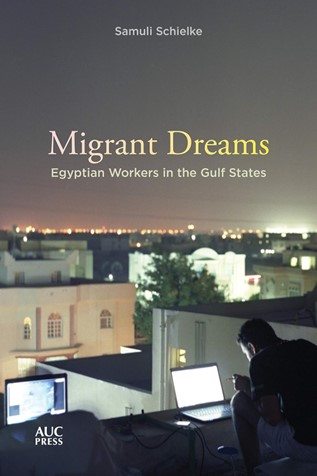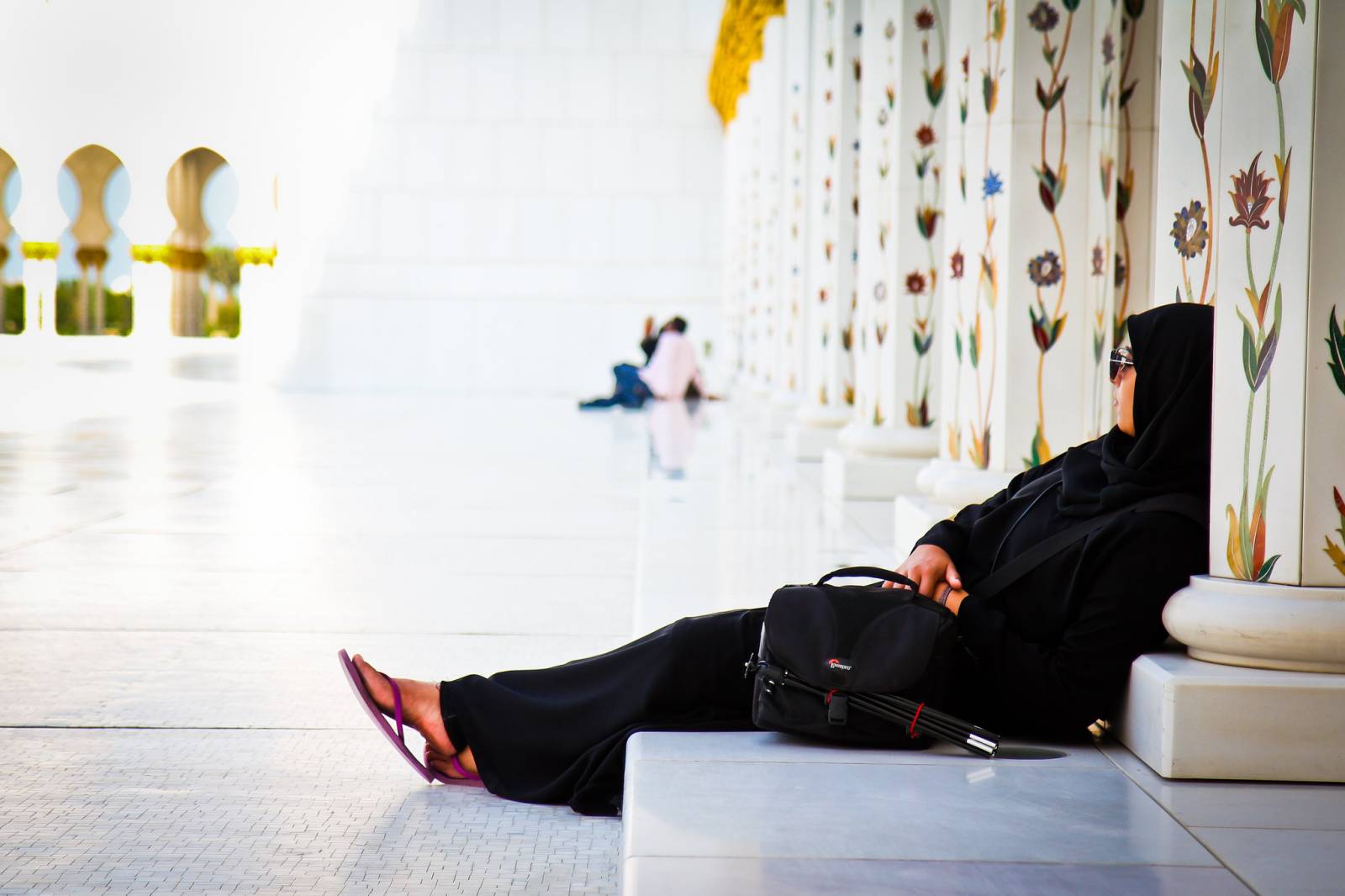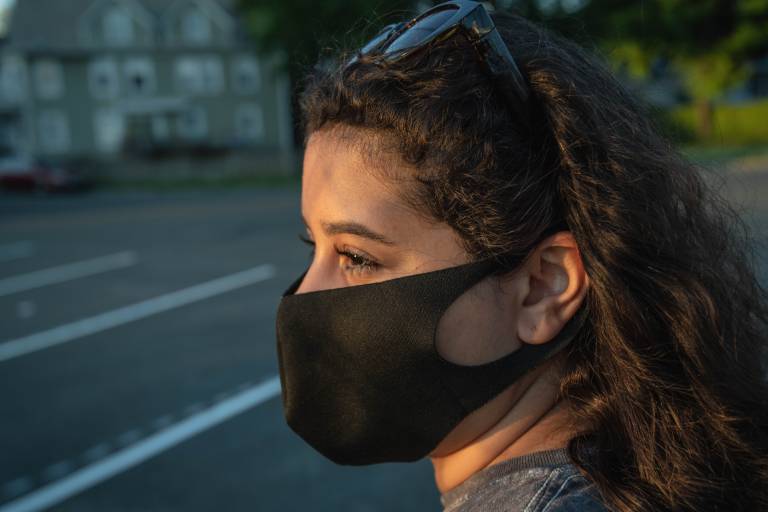Young people’s avenues to meaningful and good adulthood are often seen to occur through their transition to working life. In the Global North and South alike, how young people succeed in these transitions, has been a burning question of political and media discussions. However, the nature of and features of these transitions are highly dependent on the societal context in which they occur. Middle East and North Africa form a particular context in this respect, albeit not a monolithic one.
In the Autumn 2023, What works? research project (2019–2023), which explored youth transitions from education to employment in the Middle East and North Africa, organized an unique Studia Generalia lecture series to present recent research accounts on youth transitions to work. It also critically discussed the need to make youth research and youth policies globally more adequate as to what they are at the moment.
During the lecture series, international and Finnish scholars presented their on-going and previous research on different aspects of youth employment in the region. The scholars were professor Ragui Assaad, senior research fellow Samuli Schielke, professor Mustapha Radji, assistant professor Fatma Raach, professor Linda Herrera and university lecturer Marko Juntunen. Their research derives from academic disciplines such as labor market research, anthropology, sociology, and educational sciences. The lecturers approached the topical questions from large-scale structural issues and processes to the dynamics of everyday life in small settings.
In this text, we focus especially on waithood, informal employment, and precariousness as key markers of youth transition to employment and present the main messages and lessons learnt.
Overall, the lecture series valorized the complex dynamics that surround young people’s transition to working life and to meaningful adult life in the MENA area. In this text, we focus especially on waithood, informal employment, and precariousness as key markers of youth transition to employment and present the main messages and lessons learnt.

Photo 2. In the book Migrant Dreams Samuli Schielke summarizes a long-standing anthropological and ethnographic fieldwork on the migration of young Egyptian workers to the Gulf countries and explains how the migration interplays with their transitions to adulthood.
Good job quality and social and cultural capital
Are there enough good quality jobs for the large generations of young people in the MENA region? According to the lecturers, a perspective focusing on people’s socio-economic status provided relevant answers to this question. The central argument of this perspective lies in the decline of the quality of employment opportunities in the region due to the implementation of structural economic readjustment programs recommended or imposed by the International Monetary Fund and the World Bank during the 1980s and 1990s.
Unlike the older generation, whose transition to employment occurred in a context where the state-led economy played a pivotal role in creating and maintaining sustainable and stable jobs for individuals, the young generation, which is better educated and demographically more numerous, enter the labor market which is characterized by the progressive withdrawal of the state from the economy and the slow growth of the private sector.
Access to good quality jobs in this new context is partly shaped by the social, relational, and cultural capital accumulated at the level of families. According to one of the lecturers, Ragui Assaad, professor at Hubert H. Humphrey School of Public Affairs at the University of Minnesota, young people, whose parents have a good level of education, and occupy well-positioned professions, and relational capital, appear to be more likely to access good quality jobs in state institutions and private companies than young people who lack these capitals. However, the degree of adoption and manner of implementation of economic structural adjustment programs appear to be important factors explaining the extent to which access to quality employment is determined by the socio-economic status of young people. Ragui Assad highlighted the differences between the cases of Egypt, Jordan, and Tunisia. Jordan has been able to maintain a dynamic of recruitment in the public sector, particularly in the security services, which are more extended to people from different social backgrounds. Furthermore, the private sector in this country is more important in terms of job creation than in Egypt, while Tunisia, whose employment in the formal private sector is higher than that of Egypt, has implemented a public sector employment policy based on the duration of unemployment, in which the long-term unemployed are given priority in the recruitment process.
Tunisia, whose employment in the formal private sector is higher than that of Egypt, has implemented a public sector employment policy based on the duration of unemployment, in which the long-term unemployed are given priority in the recruitment process.
Applying the analysis of socio-economic status challenges educational policies implemented for decades in the region. According to Ragui Assaad, the democratization and massification of education have spread hope to the younger generation for greater integration into the labor market and social mobility. However, the perspective of socio-economic status argues that access to good quality jobs is not only a matter of educational attainment, but also a question of latent processes of social and cultural capital which favor certain young people by good quality jobs and despairs the expectations of others.
Ragui Assaad also estimated that this analysis is useful for understanding the Arab uprisings in the region in late 2010. Educational attainment increased the younger generation’s expectation of a good life and their uprising during these events was a form of frustration related to non-achievement of this expectation.
Waithood and informal employment
In the conditions of waithood, attention is paid to the life course suspension during which a young person, in terms of biological age, is an adult, but socially not recognized as an adult due to dependency in a family. Waiting for formal and stable employment is considered an aspect of waithood because it influences and delays young people’s transition to adult life through the formation of a nuclear household.
During his lecture, Ragui Assaad used the concept of waithood to analyze the fate of young people in the MENA region who have not been able to access stable and good quality employment. By comparing the cases of Egypt, Tunisia, and Jordan, it appeared that waithood is a phenomenon that further distinguishes Tunisian and Jordanian young, and to a lesser extent young Egyptians. In Tunisia, employment policies prioritize young people who have long-standing unemployment periods. However, analysed from the point of view of the socio-economic status, waithood seem to affect especially educated young people in Tunisia with a low socio-economic status, while in Jordan, it seemed to concern young people with a lower level of education.
In the conditions of waithood, attention is paid to the life course suspension during which a young person, in terms of biological age, is an adult, but socially not recognized as an adult due to dependency in a family.
In many of the Arab States, the working life is characterized by informal employment. It is defined as “any activity of persons to produce goods or provide services for pay or profit that is not effectively covered by formal arrangements such as commercial laws, procedures to report economic activities, income taxation, labor legislation and social security laws and regulations providing protection against economic and personal risks associated with carrying out the activities” (ILO, 2023). In the Arab States, this type of employment concerns 64% of the active population, including 85.1% young people (15–24 years old) compared to 61.1% for the adult population (ILO, 2020). Accordingly, it is of great interest to inquire about young people’s work in this sector, identify its reasons, and explore to what extent working in this type of employment shapes their life course.
One of the lecturers, Fatma Raach, Tunisian assistant professor, devoted her talk to the informal employment of young people in the Tunisian context. With the title questioning whether informal work is a choice, she analyzed the relationships between national legislation organizing formal employment, the behavior of local authorities, and street vendors working informally. She concluded that young people’s informal employment can be explained by the complexities encountered in obtaining authorizations to exercise this type of employment as well as by lack of awareness about legislations.
Moreover, the lecture of Ragui Assaad provided some insights about informal employment in Egypt, especially from the perspective of socio-economic status analysis. According to him, informal employment is a response of young men with intermediate and high education, but low socio-economic status, to the decline in public sector employment opportunities and slow growth of sustainable work in the private sector.
Youth as precariat
The concept of precarity was discussed by professor Linda Herrera during her lecture. It challenges the overemphasis placed on youth agency and individual responsibility in a context where the labor market favors flexible, short-term, disposable, and cheap labor. Referring to Guy Standing (2011), Linda Herrera defined precarious people as those who live through unstable and insecure labor, in and out of jobs, without an occupational identity, financially on the edge, and losing rights. Applying this concept to the employment conditions of young people in the MENA region, she criticized part of the Arab Human Development Report (2016) which exaggerates on youth empowerment while the logic of the market and the neoliberal order shape social and economic policies internationally and in the region. She highlighted in this context that the logic of the market and the neoliberal system weakens the formation of young people as a coalition group capable of collectively negotiating their interests. Consequently, overstating the individualization of young people’s transitions through empowerment force them to face an economic system which strives to retain them as short-term workers and not as career builders.
Entrepreneurship has recently been portrayed as “the magic solution” to the unemployment of young people in the MENA region. Youth as precariat was also addressed by Linda Herrera in the framework of entrepreneurship.
If problems of efficiency and mentoring are at the origin of the failure of many entrepreneurial projects led by young people, Linda Herrera considered that the effects of the myths conveyed by stakeholders (media, civil society actors, governments) according to which anyone with an idea, courage, and determination can become a successful entrepreneur is also relative to this failure.
This policy has made their transition an endless and repetitive and sometimes even destructive process when it concerns young people in the debt trap due to the failure of their entrepreneurial projects.
Since the state and the private sector are unable to provide enough jobs, young people are pushed to create their own jobs, mainly through micro-companies’ projects, sometimes with state support granting credit. However, the quality of employment offered to young people in the framework of these policies benefits young people in the short term, but it does not guarantee them a permanent transition to employment. On the contrary, this policy has made their transition an endless and repetitive and sometimes even destructive process when it concerns young people in the debt trap due to the failure of their entrepreneurial projects. Professor Mustapha Radji, who gave a lecture about employment policies of young people in Algeria, mentioned in this context the example of The National Agency for the Development of Entrepreneurship.
Viewing youth as precariat is an important analytical approach criticizing neoliberal world order that supports policies of consumption, marketing, and economic growth over more sustainable and just alternatives.
The lectures are also part of a course Youth transitions to work in the Middle East and North Africa, which will be offered in January – March 2024 for university students by Yunet – the Finnish University Network for Youth Studies. The online course is available for all students studying in the member universities.
The course outline is here. Enrollment time: 04.12.2023 – 12.01.2024. Register here.
Writers
Yahia Benyamina was a post-doctoral researcher in What works -project. He is a sociologist from University Oran II, Algeria and works as a researcher in the Centre of Research in Social and Cultural Anthropology (CRASC), Algeria. His doctoral research focused on youth’s civic and political engagements in Algeria. Yahia is currently interested in political and social inclusion of young people in Algeria and the MENA region.
Oona Myllyntaus was a researcher in What works -project. She is a Ph.D. (Educational sciences, in spe) from University of Helsinki, Finland. In her research and work, she approaches the school system systemically and assesses the value base of comprehensive schools. Oona is especially keen on researching how the participation of young people is defined in today’s societies and how the inclusion of young people is realized in educational systems.
References
Assaad, R., C. Krafft and C. Salemi. (2023). Socioeconomic status and the changing nature of school-to-work transition in Egypt, Jordan, and Tunisia. Industrial and Labor Relations Review, 76 (4), 697–723.
Assaad, R., Hendy, R. & Salehi-Isfahani, D. (2019). Inequality of Opportunity in Educational Attainment in the Middle East and North Africa: Evidence From Household Surveys. International Journal of Educational Development, 71, https://www.sciencedirect.com/science/article/pii/S0738059319304675
Assaad, R, Krafft, C. (2015).Is free basic education in Egypt a reality or a myth? International Journal of Educational Development, 45, 16–30, https://www.sciencedirect.com/science/article/abs/pii/S0738059315000991
Herrera, L. (2017). “It’s time to talk about youth in the Middle East as the precariat.” Middle East – Topics & Arguments 9. https://doi.org/10.17192/meta.2017.9.7061
Huttunen, L. & Juntunen, M. (2020). Suburban encounters: Super-diversity, diasporic relationality and everyday practices in the Nordic context. Journal of Ethnic and Migration Studies. 46 (19), 4124–4141.
International Labor Office. (2023). New standards, increased visibility: improving measurement of the informal economy. In: https://ilostat.ilo.org/new-standards-increased-visibility-improving-measurement-of-the-informal-economy/, visited in 5.11.2023.
International Labor Office. (2020). Global Employment Trends for Youth 2020: Arab States. In: https://www.ilo.org/global/about-the-ilo/WCMS_737672/lang–en/index.htm, visited in 5.11.2023.
Schielke, Samuli. (2020). Migrant Dreams: Egyptian Workers in the Gulf States. Cairo: The American University in Cairo Press.
Standing, G. (2011).The Precariat: The New Dangerous Class. London: Bloomsbury.
The United Nations Development Programme. (2016). Arab Human Development Report 2016 Youth and the Prospects for Human Development in a Changing Reality. In: https://hdr.undp.org/content/arab-human-development-report-2016-youth-and-prospects-human-development-changing-reality, visited in 6.11.2023.






